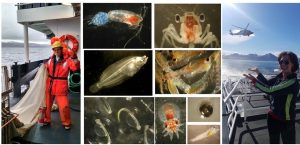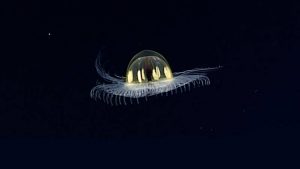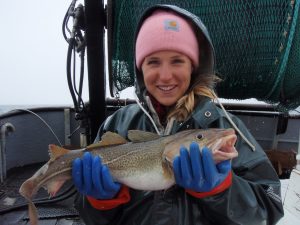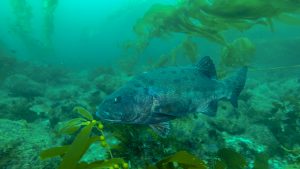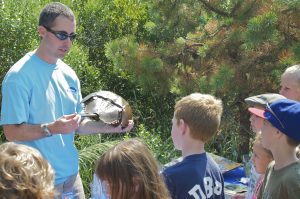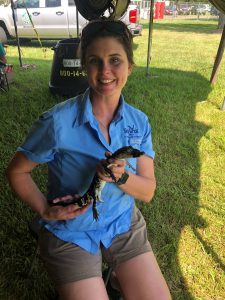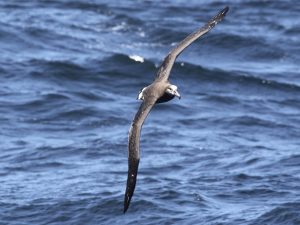The Wonderful World of Plankton: The Tiny Animals of the Sea
Colleen Harpold and Alison Deary, NOAA’s Alaska Fisheries Science Center in Seattle, WA Come learn about the exciting world of plankton! Everything from baby fishes, crab and octopus to animals like copepods and krill that spend their entire lives floating in the ocean. Narrated by two marine scientists with different career tracks, explore the tiny…
Read MoreExploring Olympic Coast National Marine Sanctuary – Virtual Tour and Trivia BINGO
Jacqueline Laverdure, NOAA’s Olympic Coast National Marine Sanctuary in Port Angeles, WA Explore the wonders of America’s Ocean and Great Lakes Treasures – Our national marine sanctuaries! Join us for this fun and interactive virtual tour as we visit our national marine sanctuaries and dive deep into Olympic Coast National Marine Sanctuary. This journey includes…
Read MoreWait! Is that a Real Jellyfish?
Michael Ford, from NOAA Fisheries in Silver Spring, MD Let’s face it. Jellyfish can be annoying sometimes when we’re on the beach. However, many oceanographers think jellyfish might play an important role in the ocean food web. When we explore the Earth’s oceans from ships and with unmanned Remotely Operated Vehicles (ROVs), we actually see…
Read MoreFishing for Food and Facts
Anna Mercer, NOAA’s Northeast Fisheries Science Center in Narragansett, RI Did you know that U.S. fisheries produce over 9 billion pounds of seafood every year? Join this webinar to learn how NOAA Fisheries works with fishermen to produce sustainable seafood that feeds people all over the world. In this webinar, you will learn about the…
Read MoreGiant Seabass, Kings of the Kelp Forest
Ryan Freedman, NOAA’s Channel Islands National Marine Sanctuary in Santa Barbara, CA Giant Seabass are a species of large fish that live in the cool waters off the coast of California. Thanks to government protections in California, this top predator of the kelp forest is beginning to return to the Channel Islands National Marine Sanctuary…
Read MoreBlue Blood, Green Eggs, and Red Knots: The amazing story of the horseshoe crab
Chris Petrone, NOAA’s Delaware Sea Grant in Lewes, DE About 20 million years ago, the horseshoe crab, as we know it today, evolved. Members of Family Limulidae, which include four extant species of horseshoe crabs, have relatives—the trilobites—that existed on Earth over 500 million years ago! In North America, just one species of horseshoe crabs…
Read MoreCoastal Marshland in My Texas Backyard
Nikki Fitzgerald, NOAA’s Texas Sea Grant in Anahuac, TX Let’s explore Nikki’s backyard coastal marsh together in the ‘Alligator Capital of Texas’! She will take us on a journey while kayaking or riding on the back of a marsh buggy. Have you ever heard a baby alligator chirp before? No worries, Nikki will let you…
Read MoreFollowing ‘Ō‘io: The Life of Hawaiian Bonefishes
Keith Kamikawa, NOAA Fisheries Pacific Islands Regional Office in Honolulu, Hawai’i It’s easy to follow friends and family who are important to us through social media. But there is no Facebook for fish. So how do we keep track of fish species that are important to our fisheries? Hawai‘i is home to two species of…
Read MoreWinged Ambassadors: Ocean Travelers
Jennifer Stock, NOAA’s Cordell Bank National Marine Sanctuary in Olema, CA Seabirds that live their entire lives at sea (except for one very special time of the year!) have tremendous stories to tell about the health and ecology of the global ocean. What makes a seabird a seabird? How do we know where they live…
Read MoreWhat’s in that Mouthful of Seawater: Introducing the Ocean’s Microscopic World
Vera Trainer, NOAA’s Northwest Fisheries Science Center in Seattle, WA The ocean’s microscopic single-celled organisms produce over half the world’s oxygen. These phytoplankton provide clean air, draw down carbon dioxide responsible for climate change, and are a major source of food for marine creatures. However, some phytoplankton can produce chemicals that are poisonous to humans,…
Read More
